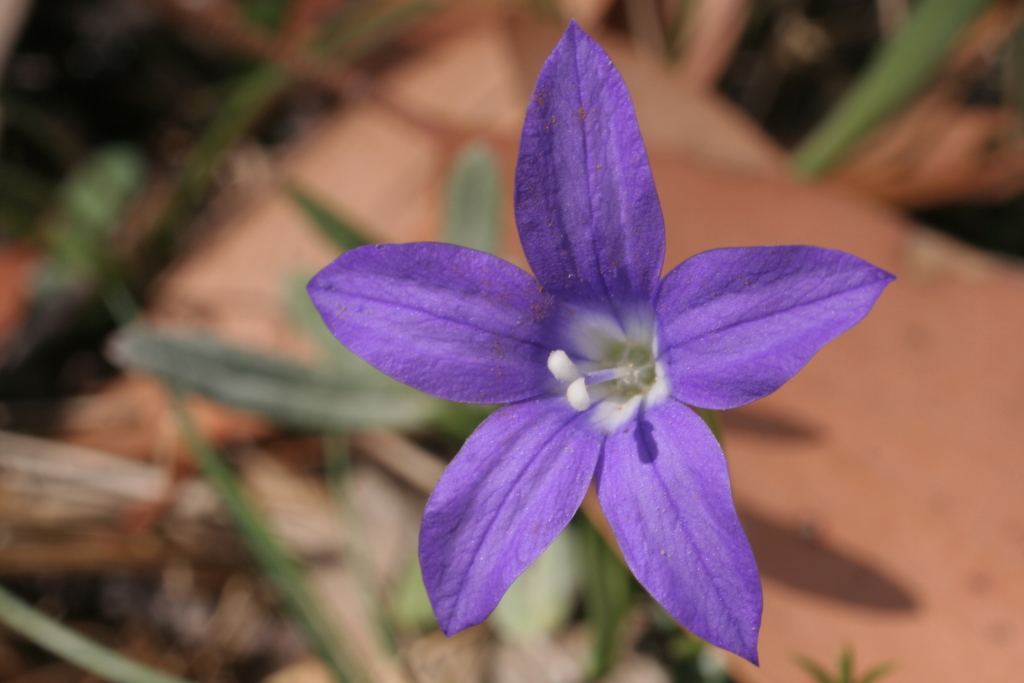Wahlenbergia gloriosa
Lothian Royal BluebellRhizomatous perennial; stems simple or occasionally 1- or 2-branched, usually distinctly hirsute toward base, glabrous above, decumbent (often) to ascending or erect, to c. 30 cm high, usually leafless in upper third; leaves all opposite, or upper ones alternate (rarely mostly alternate), c. elliptic, 8–35 mm long, 1–15 mm wide; margins undulate, usually crenate or dentate with callus-teeth. Hypanthium narrowly obconical, 2.5–6.5 mm long, glabrous; calyx-lobes erect, narrow-triangular, 2.5–7 mm long, glabrous; corolla shortly campanulate, rich purple, sometimes whitish or yellowish outside, tube 2.5–8.5 mm long, equal to or slightly longer than calyx-lobes, lobes elliptic, 11–25 mm long, 6–12 mm wide, acute, very widely spreading; style 6.5–13 mm long, hardly constricted, lobes 2(–3), oblong. Capsule narrowly obconical, 8–12 mm long, 3–5 mm wide. Flowers Jan.–Mar.
GipP, EGU, HSF, HNF, MonT, VAlp. Also NSW. Locally common in heathland, woodland and tall forests above c. 1500 m, throughout most of the high country (e.g. Mt Buffalo, Bogong High Plains, Cobberas, Snowy Range, Mt Torbreck), but not on the Baw Baw Plateau. Often occurring in rocky ground.
Walsh, N.G. (1999). Wahlenbergia. In: Walsh, N.G.; Entwisle, T.J., Flora of Victoria Vol. 4, Cornaceae to Asteraceae, pp. 554–563. Inkata Press, Melbourne.
 Spinning
Spinning
